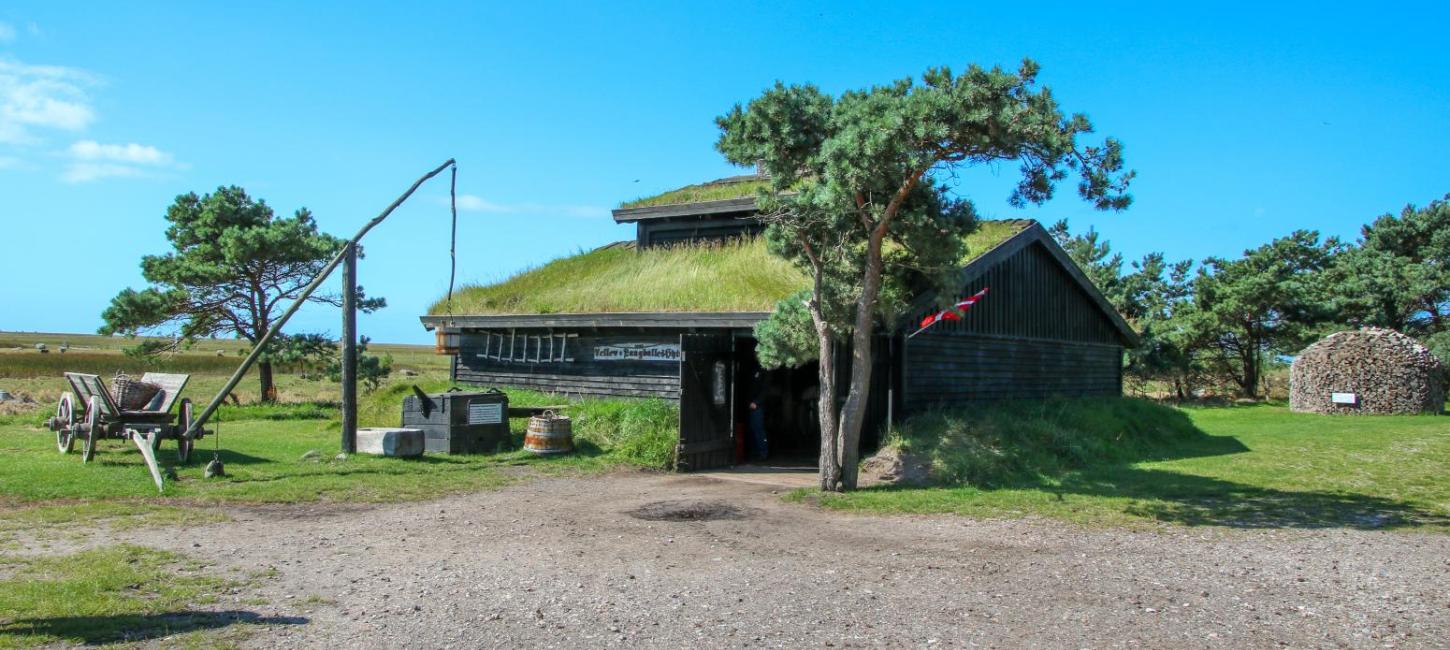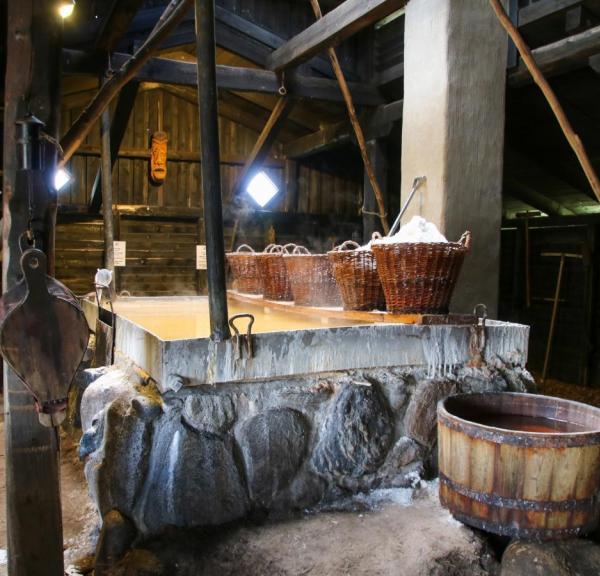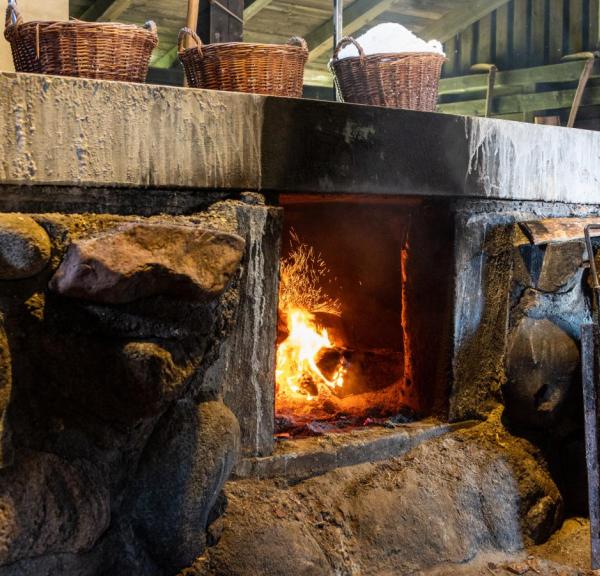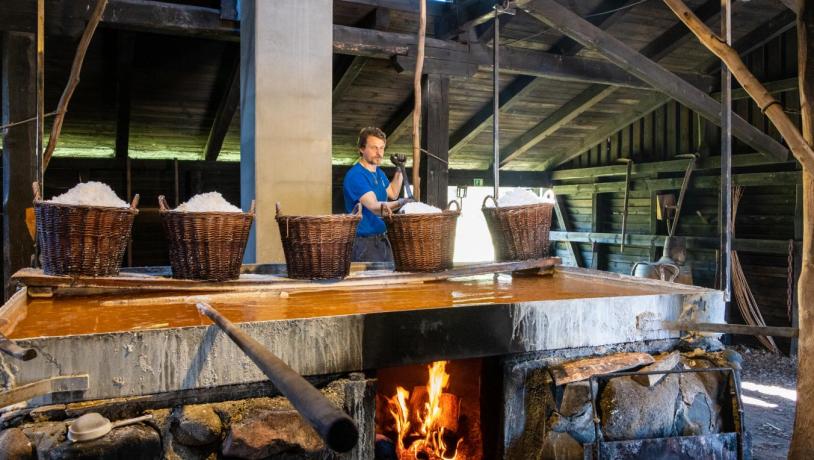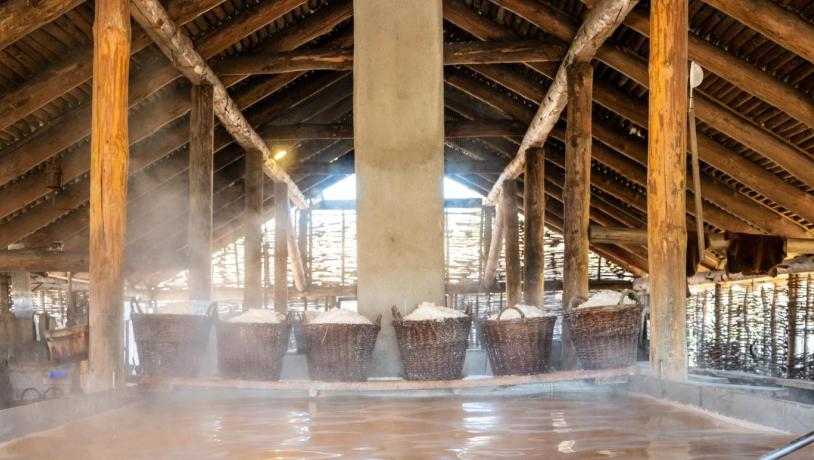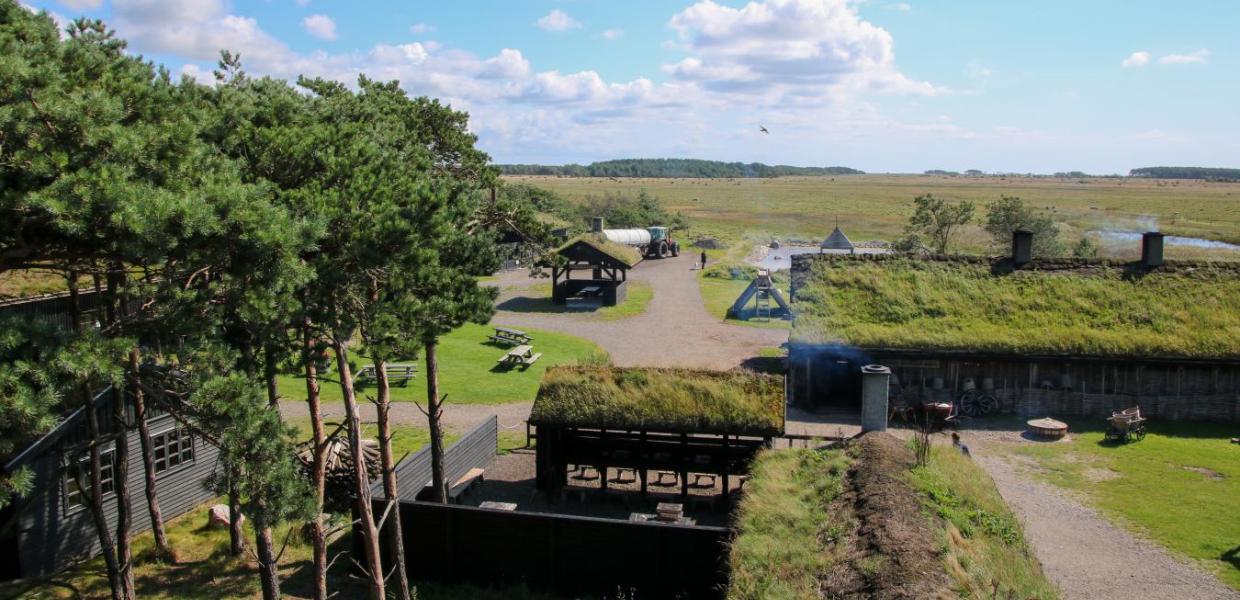Lecture
It is the salt maker's responsibility to ensure that the salt water in the iron pans maintains the correct temperature. To control this, the salt maker uses a wooden rake which he pulls through the water. It is also the salt maker who shares all there is to know about his trade and the history of salt on Læsø. He tells these stories completely free of charge for all visitors who wish to listen, every HOUR from 10.00-16.00 from 1 May til 1 October, as well as during Easter and the autumn half-term holiday.
Very salty groundwater
Today, as in the Middle Ages, the salt water is pulled from wells on Rønnerne. A combination of geology, winter storms and a dry climate means that the ground water gets a very high saline content. Several times during winter, the seawater floods the flatlands of Rønnerne, and then during the summer months, there iss a high rate of evaporation from the sandy surface. At a depth of approximately 2 metres down through the sand, the water meets a solid layer of blue clay, which prevents it from seeping further. As such, the water remains relatively near the surface and evaporates. The remaining water can reach a saline level of up to 15 percent. In comparison, the saline concentration in Kattegat is around 2-3 percent.
